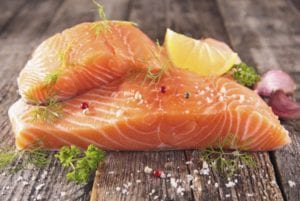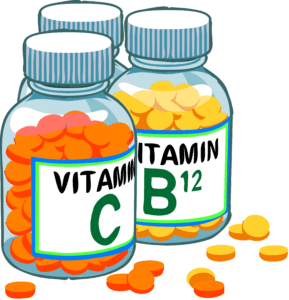How Nutrition Can Prevent Sports Injuries…
01/03/2017
Sensible and healthy nutrition carries with it many benefits; some more obvious than others. The prevention of soft tissue injuries for example, can be greatly enhanced by factors such as effective warm up and cool down strategies, correct equipment, training and appropriate levels of fitness – it’s also useful to have a first aid kit to hand just in case.
However, a key factor and one which can often be overlooked in the prevention of such injuries is nutrition. When we think of the human body as something which is constantly breaking down and replenishing its component parts, including soft tissue. We can start to realize that this whole process is powered mainly by the nutrients, vitamins and minerals we ingest and the times of the day we ingest them. This is just as true of the prevention of injuries as in the recovery from existing ones.
Soft tissue injuries…

Injuries to the soft tissues are, by a significant margin, the most common type of injury to those involved in sport, exercise and fitness. These types of injuries relate specifically to areas of the body such as connective tissue, ligaments, tendons and the nerves that surround the bodies’ vital organs, as opposed to the organs themselves.
Damage to this soft tissue can typically take between 2 to 4 months on average to heal fully and, while that recovery time isn’t always painful for the full duration of the healing process, there are positive steps that can be taken to prevent such injuries, the most effective of which is a well-balanced and well-timed combination of natural and supplemented nutrition.
Natural Food Sources…

A healthy natural diet is the first and most essential component in the prevention of soft tissue injury. With a well-planned balance of vitamins, minerals, proteins and healthy fatty acids. Protein, from foods such as fish, chicken and natural dairy produce can be broken down into amino acids, which are essential for maintaining not just soft tissue, but the entire body.
Likewise, Vitamin rich nutrition which is well balanced across a wide range of vitamins such as A, B, C, D, E and K all play their own important roles in maintaining healthy levels of collagen, elastin and antioxidants, while also maintaining and regulating optimum metabolism.
Minerals are often overlooked in the prevention of soft tissue damage, yet their role is also vital as a component in the prevention of soft tissue injury. Magnesium particularly plays a key role in muscle tone and strength, yet Calcium, Iron, Zinc and Potassium also play vital parts in maximizing the prevention of injury.
Complementing healthy nutrition with supplements…

Nutritional supplements, when used to complement a natural healthy diet can dramatically improve the prevention of soft tissue injury. Vitamin D is shown to greatly increase the rate at which calcium,
Vitamin D is shown to greatly increase the rate at which calcium, protein and carbohydrates metabolize in the body. Magnesium, as mentioned, plays a key role in the regulation of blood sugar levels along with muscle and nerve function. Iron aides the transportation of oxygen, and Zinc boosts the immune system. Vitamin and mineral supplements are shown to greatly assist the body in the prevention of soft tissue injury.
Vitamin and mineral supplements are shown to greatly assist the body in the prevention of soft tissue injury. Conversely a deficiency of vitamins and minerals or just as importantly, their overuse will hinder prevention and can make the body more prone to soft tissue injury and may cause potential health problems
Water and hydration…

Effective hydration strategies are another easily overlooked factor in the prevention of soft tissue injury. Water aides the body’s ability to remove toxins that can lead to inflammation, and improves the lubrication of joints as well as boosting muscle energy, endurance levels and alertness. Good hydration strategies also help deliver vitamins and minerals to soft tissue and aid the expulsion of waste as well as aiding temperature regulation and preventing cramps.
While there are no definite rules on how much water to take onboard during exercise, there are several factors which an individual need to take into account. Sweat rate, age, weight and environmental factors such as heat, altitude and humidity levels all impact hydration levels. The American council on Exercise recommends 17-20oz of water 2-3 hours before exercise, 8oz of fluid 20-30 minutes prior to exercise (or during warm up), 7-10 oz every 10-20 minutes during exercise, an additional 8oz within 30 minutes after exercising and around 16-24 oz of fluid for every pound of body weight lost after exercise.
Anti-inflammatory diet…

As well as the obvious importance of a healthy, balanced nutritional regime that contains sensible, optimum levels of vitamins, minerals and fluids. Nutrition that has specific anti-inflammatory properties can also play a key role in the prevention of soft tissue injury.
Clinical nutritionists and sports scientists agree that a balanced diet containing the natural oils found in fish and nuts along with the anti-inflammatory fats found in natural dairy produce all have a positive effect on the body’s ability to maintain the condition of soft tissue and prevent injury.
Similarly, herbs and spices provide a reliable source of anti-inflammatory nutrition, particularly turmeric, black pepper, chili and ginger, as do fresh fruits and vegetables which bring the added benefits of being potent anti-oxidants. D.S Senchina sites the importance of Echinacea and Ephedra as herbs used by athletes worldwide to strengthen the immune system and promote alertness, core strength and endurance.
While it is clear that those who partake in sport and physical exercise will naturally be more prone to soft tissue injury. It is equally clear that focusing on nutrition and the timing of the nutritional intake can play a vital role in both minimizing the risk of such injuries and maximizing performance. It is worth noting that, although each individual is different and every sport or physical exercise is unique in a host of different ways. A well-researched and planned nutritional regime tailored to the individual will promote the prevention of soft tissue injuries.
This post was written by Kelly Crawford. If you would like to write a guest post for LEP Fitness please Contact Nick
Author Bio:

Kelly Crawford is passionate about health, well being, running and minimalist. As a competitive runner, she has insight into the struggles of balancing work-outs with good nutrition and injury prevention. She is a contributing writer for HardBoiledBody.com – a site dedicated to health, nutrition and fitness advice.